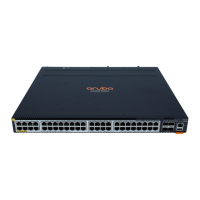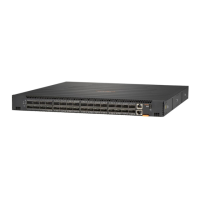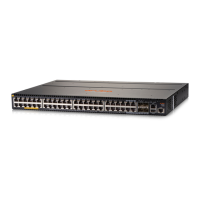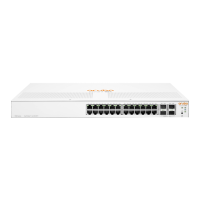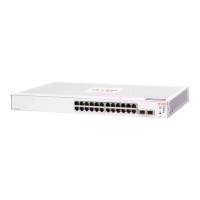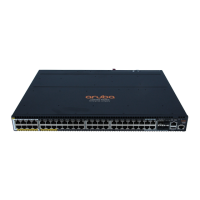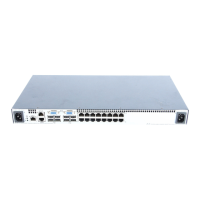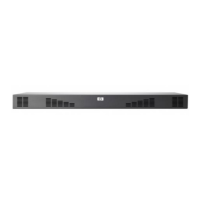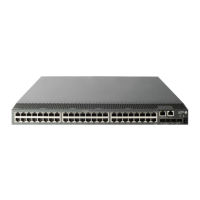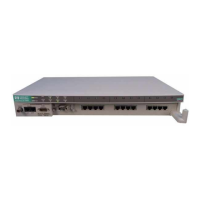MAC address table changes : Disabled
MAC Address Count : Enabled
1
Address Community Events Type Retry Timeout
---------------- ----------- ------- ------ ------ -------
15.146.194.77 public None trap 3 15
15.255.134.252 public None trap 3 15
16.181.49.167 public None trap 3 15
16.181.51.14 public None trap 3 15
Excluded MIBs
1
The notify option is enabled.
Advanced management: RMON
The switch supports RMON (remote monitoring) on all connected network segments. This allows for
troubleshooting and optimizing your network.
The following RMON groups are supported:
• Ethernet Statistics (except the numbers of packets of different frame sizes)
• Alarm
• History (of the supported Ethernet statistics)
• Event
The RMON agent automatically runs in the switch. Use the RMON management station on your network to
enable or disable specific RMON traps and events. Note that you can access the Ethernet statistics, Alarm and
Event groups from the Switch Manager network management software.
CLI-configured sFlow with multiple instances
sFlow can also be configured via the CLI for up to three distinct sFlow instances: once enabled, an sFlow
receiver/destination can be independently configured for full flow-sampling and counter-polling. CLI-configured
sFlow instances may be saved to the startup configuration to persist across a switch reboot.
Configuring sFlow (CLI)
The following sFlow commands allow you to configure sFlow instances via the CLI. For more information, see
Advanced management: RMON on page 213.
Syntax:
[no] sflow <receiver-instance> destination <ip-address> [< udp-port-num >]
Enables an sFlow receiver/destination. The receiver-instance number must be a 1, 2, or 3.
By default, the udp destination port number is 6343.
To disable an sFlow receiver/destination, enter no sflow receiver-instance .
Syntax:
sflow <receiver-instance> sampling <port-list> <sampling rate>
Chapter 7 Configuring for Network Management Applications 213
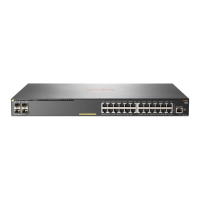
